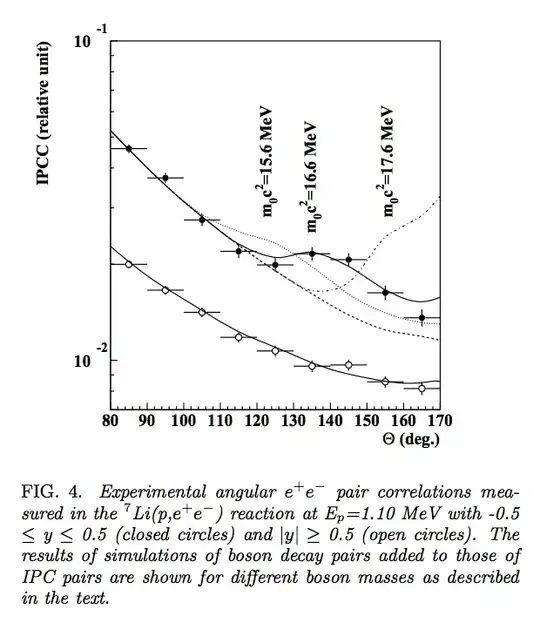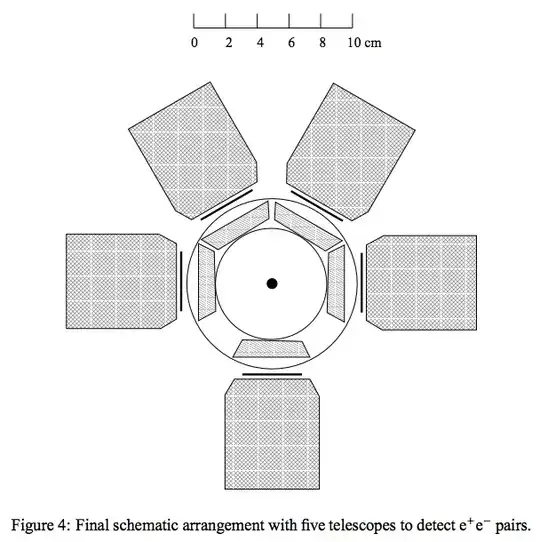update: The 2020 Jan/Feb issue of the CERN Courier News analysis: Rekindled Atomki anomaly merits closer scrutiny
edit: @annav has noted an informative blog post summarizing the theoretical (but not experimental error) issues related to this measurement.
There is some excitement about a bump in an electron-positron opening angle spectrum from 8Be internal pair conversion that it might be a new particle - mediator of a possible new force. eg. Feng et al. 2016.
In Krasznahorkay et al. 2016 (ref. 6 of Feng 2016) the bump can be seen in Fig. 4:
However, Gulyás et al (2015) (ref. 30 of Feng et al. 2016) shows a measure of the sensitivity as a function of the opening angle, and the improved design with 5 lepton telescopes is still fairly bumpy:
The resulted angular correlation for the uncorrelated events gave us the experimental response curve. Reasonably good agreement was obtained with the results of the MC simulations as presented in Fig. 5.
My Question: Recalling another electron positron "bump" experiment (see below), and it's final conclusion after three different experiments by three different groups at two laboratories finally got together with sufficient wine, what is the evidence so far that this bump is not just a calibration error, an incorrect efficiency correction, or something similar?
From this review or "retrospective" presentation - refer to the original document for more background.
above: slide #4 from here.
above: slide #26 from here.




